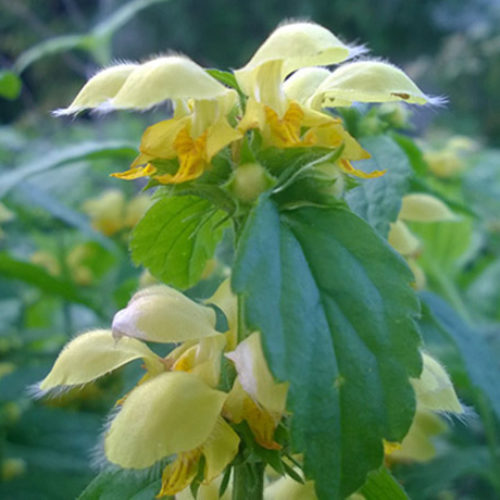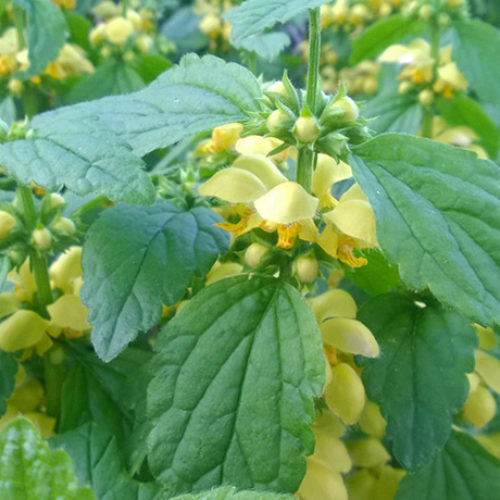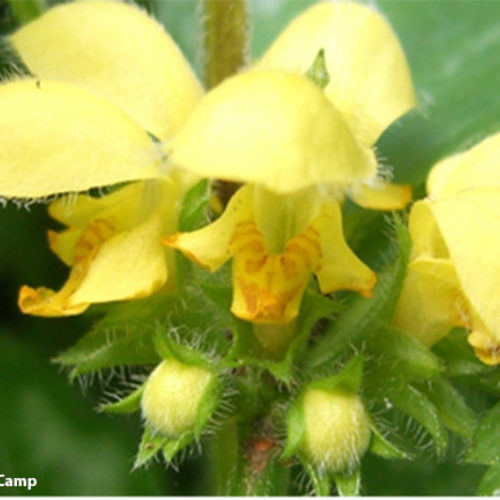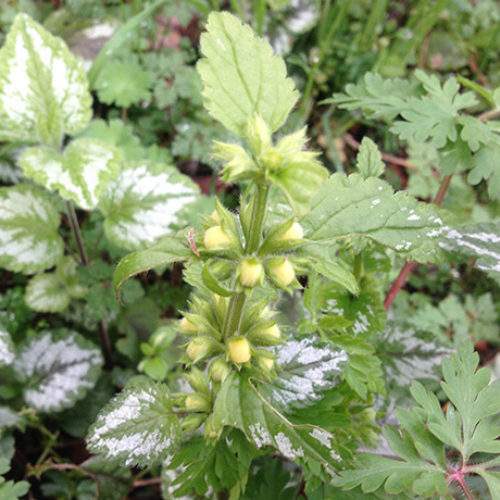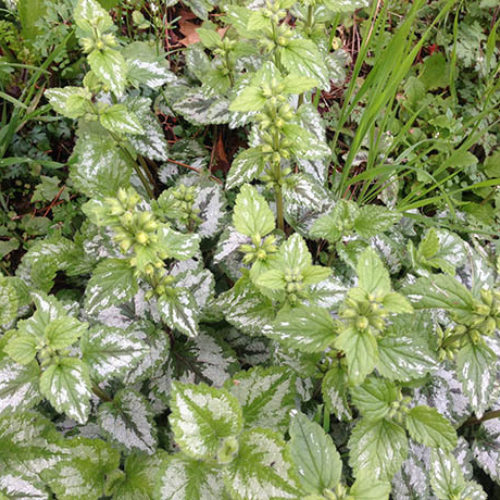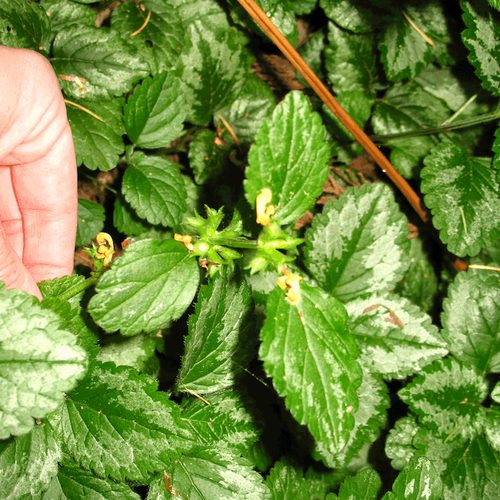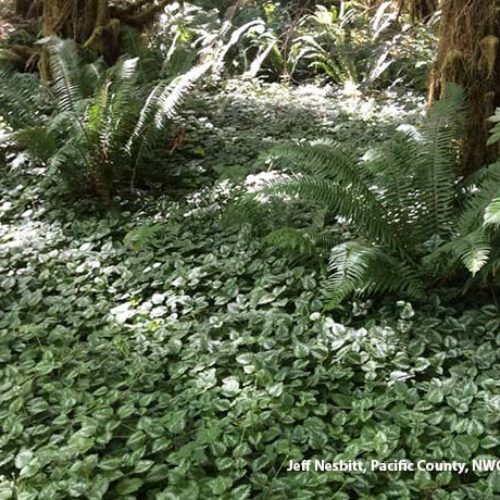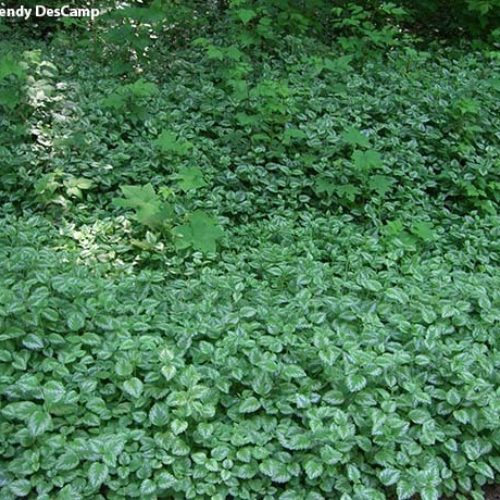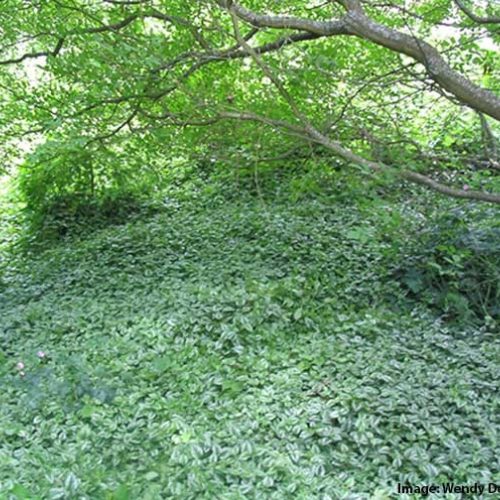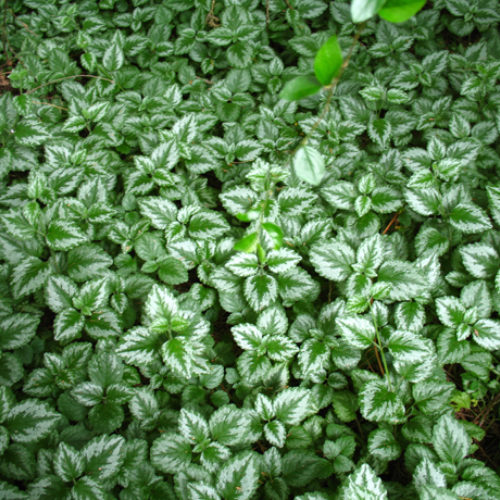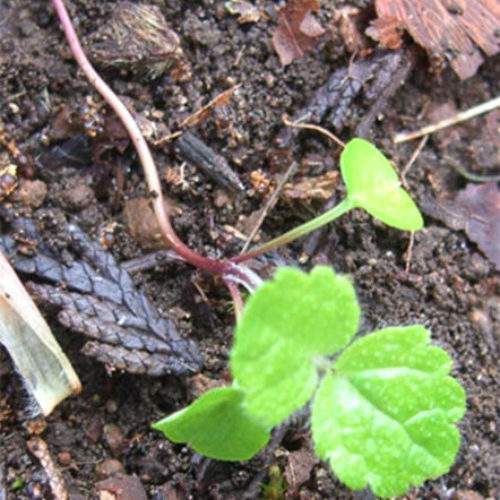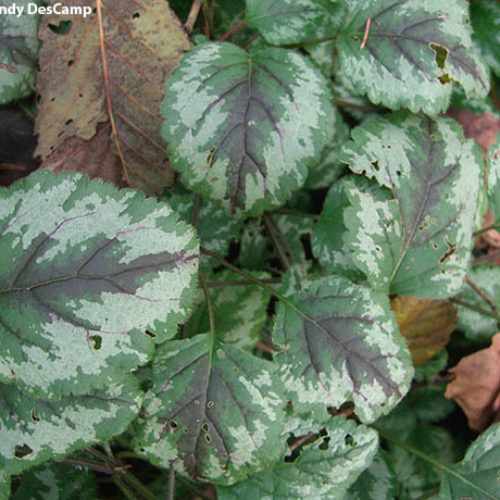Yellow Archangel
Lamiastrum galeobdolon
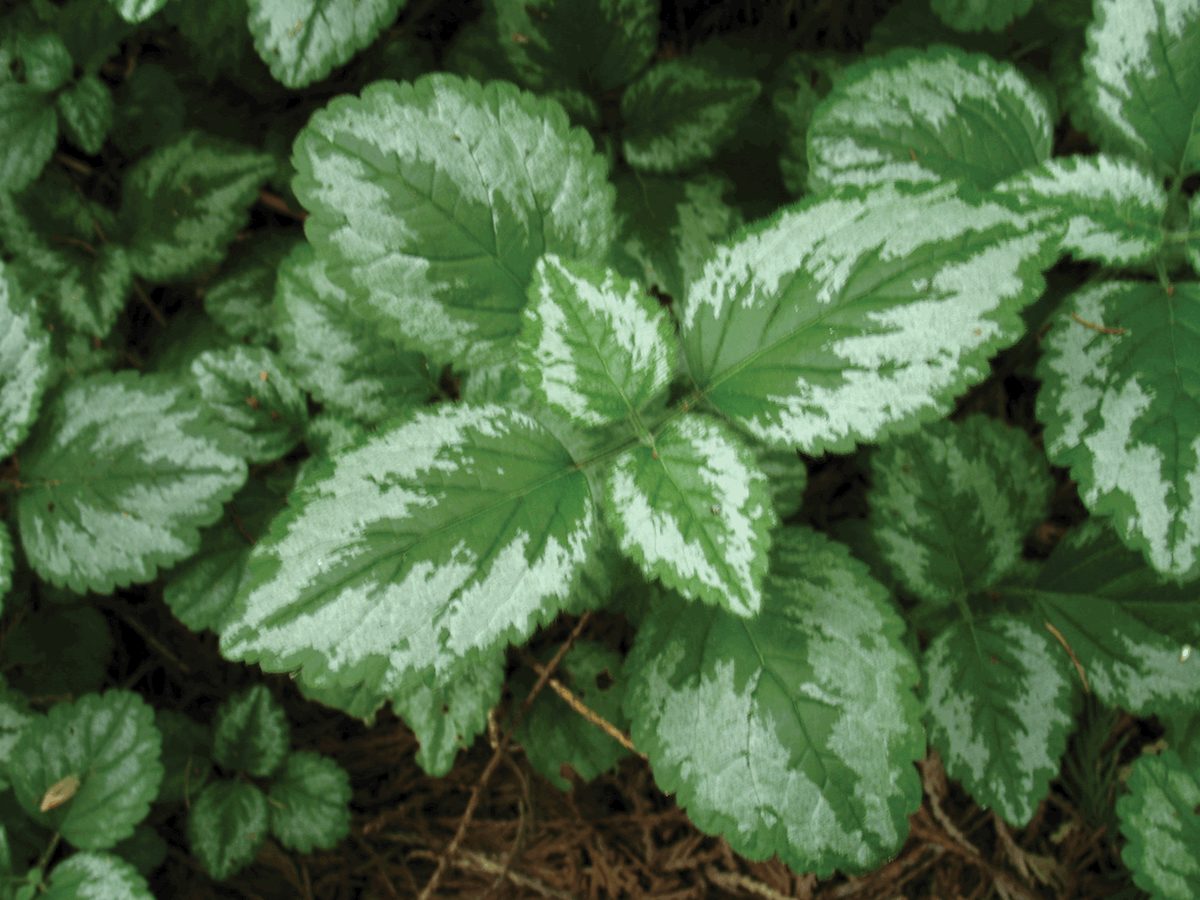
Family: Lamiaceae
Other Common Names: Herman's pride, dummy nettle, golden dead-nettle, weazel snout, silverfrost
Weed class: B
Year Listed: 2007
Native to: Europe and Asia
Is this Weed Toxic?:
not known to be
Legal listings:
This plant is also on the Washington State quarantine list. It is prohibited to transport, buy, sell, offer for sale, or distribute plants or plant parts of quarantined species into or within the state of Washington or to sell, offer for sale, or distribute seed packets of seed, flower seed blends, or wildflower mixes of quarantined species into or within the state of Washington. Please see WAC 16-752 for more information on the quarantine list. For questions about the quarantine list, contact the Washington State Department of Agriculture's Plant Services Program at (360) 902-1874 or email PlantServices@agr.wa.gov.
Why Is It a Noxious Weed?
Yellow archangel escapes from residential plantings, becoming very invasive and forming dense mats of groundcover vegetation. This plant outcompetes native species and does not provide adequate food or cover for wildlife.
How would I identify it?
General Description
Yellow archangel is an evergreen to semi-evergreen, fast growing perennial groundcover that can be trailing or upright if growing over other plants.
Flower Description
Flowers are small and yellow and two lipped—the upper lip is hooded and the lower lip with orange to brown markings. Flowers are in whorls in leaf axils on short stalks, blooming in early spring.
Leaf description
Leaves are oppositely arranged, oval shaped, toothed, and hairy with typically variegated silvery-gray markings. In cold temperatures, leaves develop a purple coloring on the undersides and in the center of the leaf above.
Stem description
Stems grow along the ground and can root at leaf nodes and along the stem in wet soils. Stems are green and 4 sided. Stems freely branch, forming dense growth.
Fruit Seed Description
Flowers form 4 nutlets, with each nutlet containing one seed.
Where does it grow?
Yellow archangel can grow in sun to shade. It often escapes from residential plantings to nearby forested areas, greenbelts and riparian areas. It can be found in the residential setting in gardens, rockeries and ornamental borders. Please click here to see a county level distribution map of yellow archangel in Washington.
How Does it Reproduce?
It reproduces vegetatively from nodes on stem as well as stem fragments. It can also spread by seeds. Some infestations in Washington are from old hanging baskets that still had viable plants in them, which were dumped in natural areas.
How Do I Control It?
General Control Strategy
.
Mechanical Control
Vines can be hand pulled making sure to remove roots and stem fragments. Roots left in the soil will re-sprout and will have to be monitored and pulled. The King County Noxious Weed Control Board reports that when this plant is cut, it re-grows in denser conditions. Disposal Warning: Make sure to properly discard all plant pieces in thick plastic bags and transport them to a sanitary landfill site. Composting is not an appropriate means of disposal as this may result in further distribution.
Herbicide Control
Please refer to the PNW Weed Management Handbook, or contact your county noxious weed coordinator.
For More Information
See our Written Findings for more information about yellow archangel (Lamiastrum galeobdolon).
See our brochure on yellow archangel
Cowlitz County NWCB Fact Sheet on yellow archangel
Stevens County NWCB Fact Sheet on yellow archangel
King County NWCB Fact Sheet on yellow archangel
Island County NWCB Fact Sheet on yellow archangel
Jefferson County NWCB Fact Sheet on yellow archangel
Whatcom County NWCB Fact Sheet on yellow archangel
San Juan County NWCB Brochure on yellow archangel
Control Options for yellow archangel from Whatcom County NWCB



